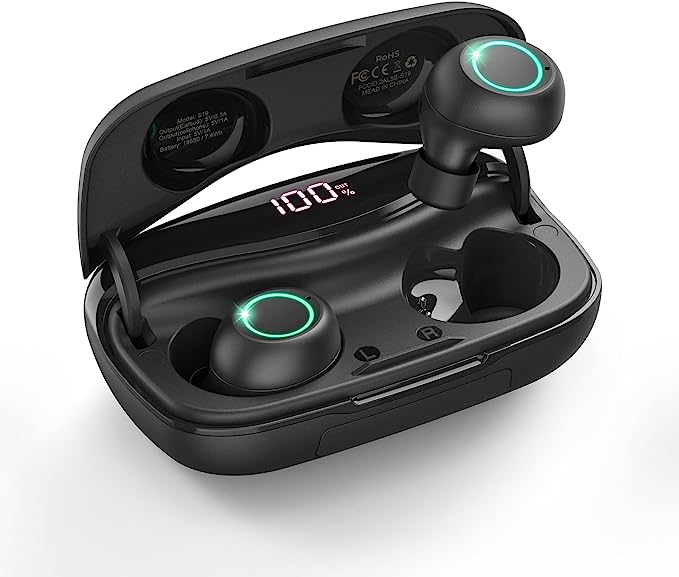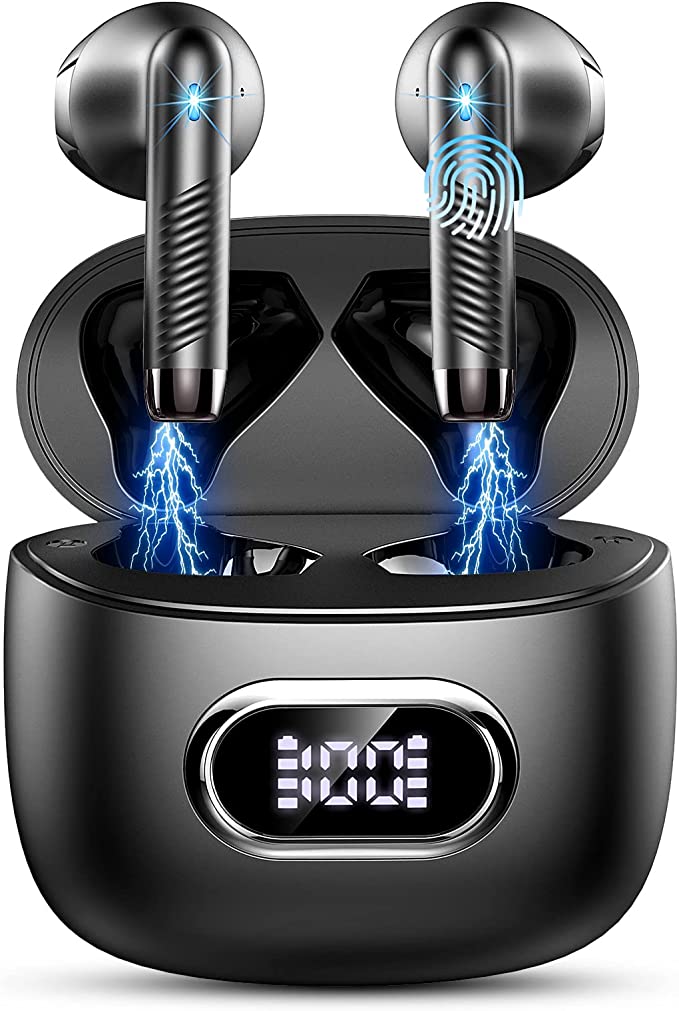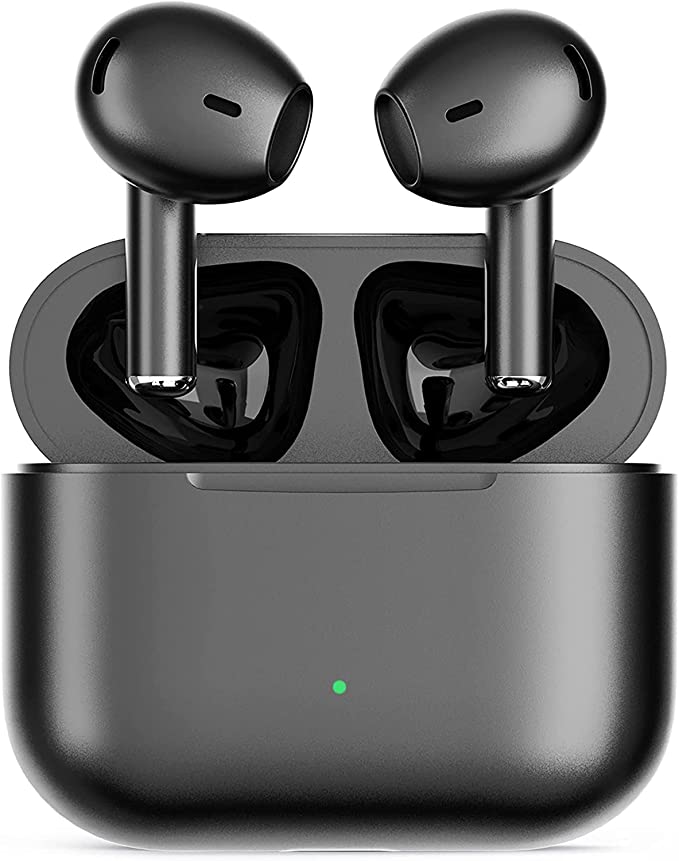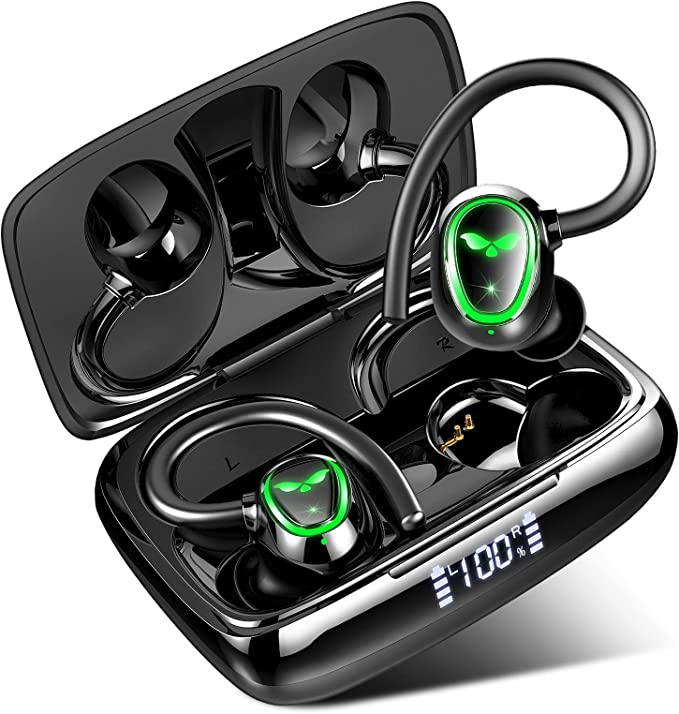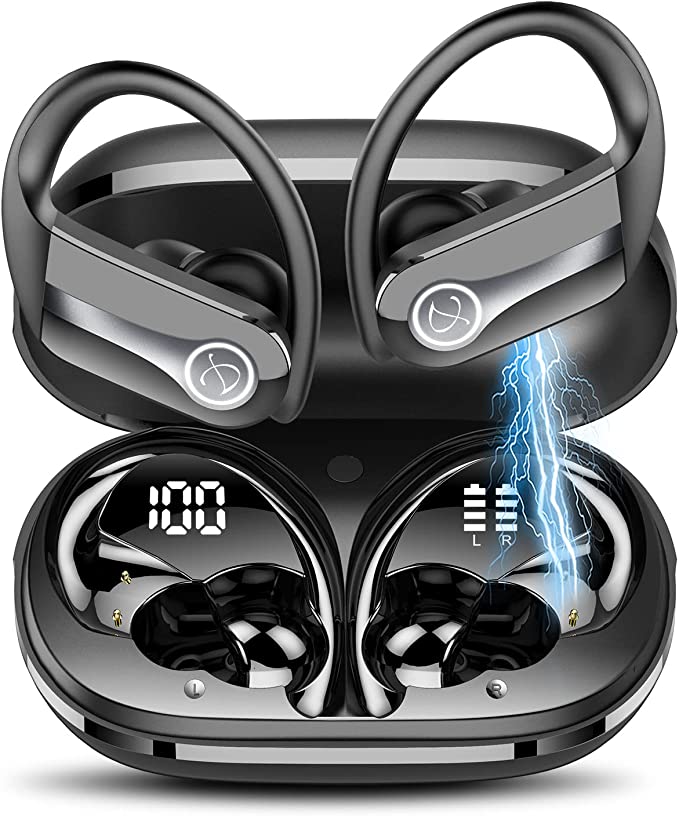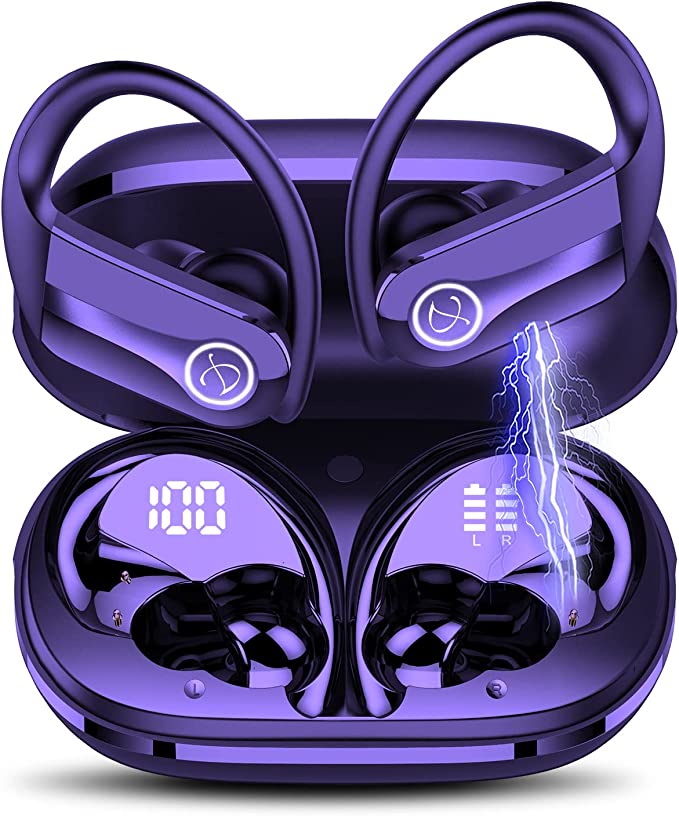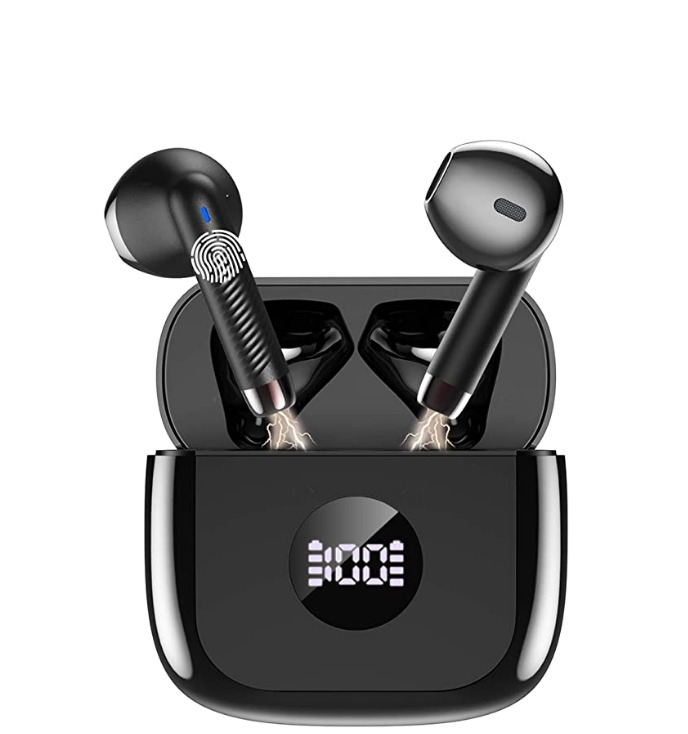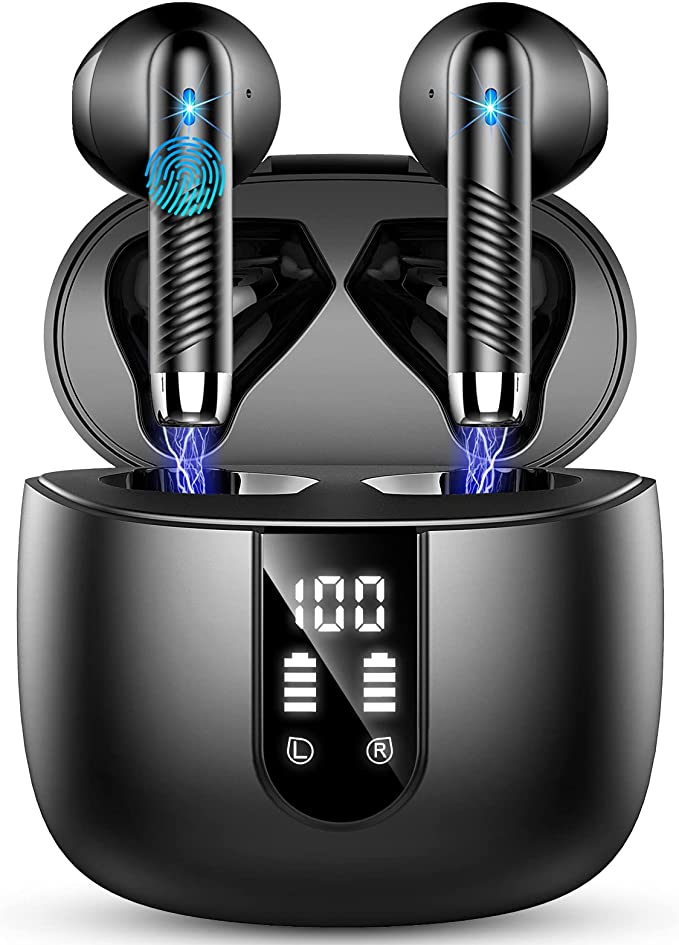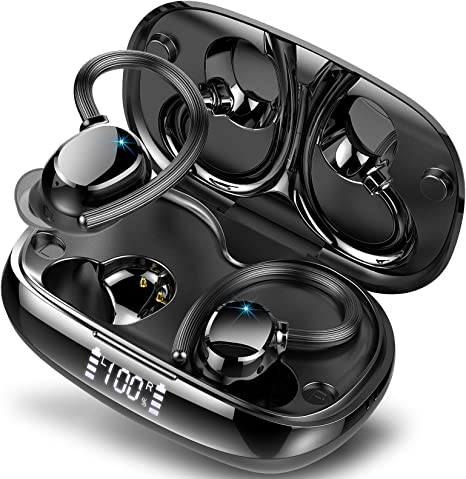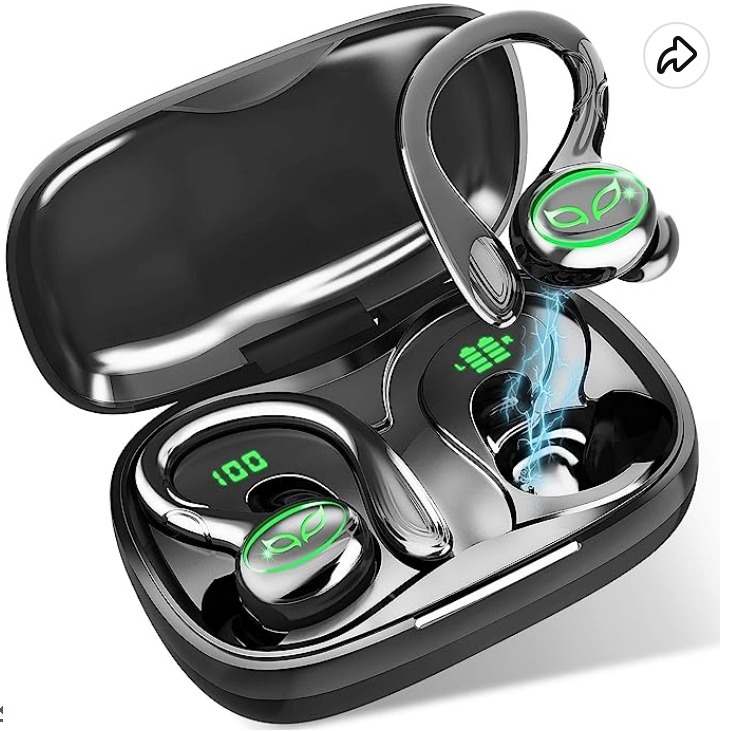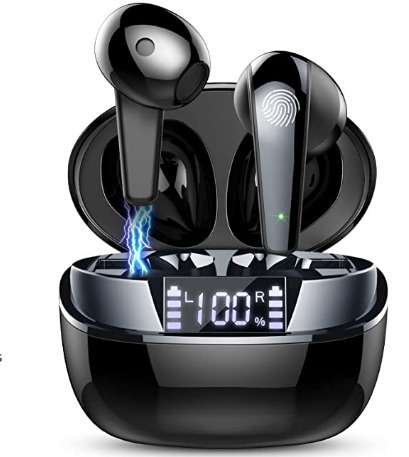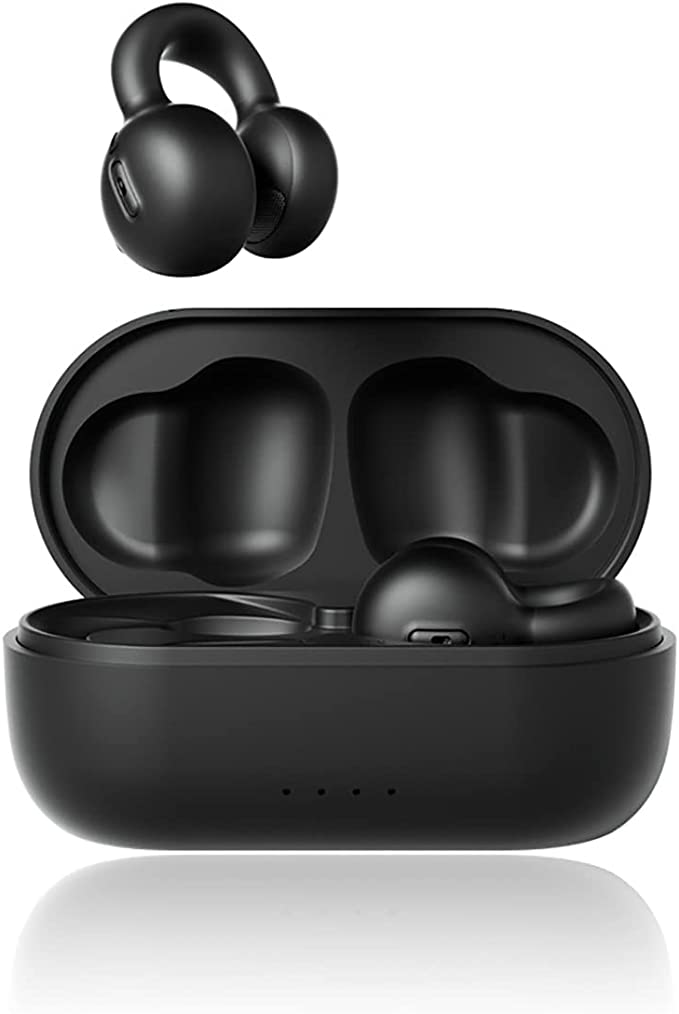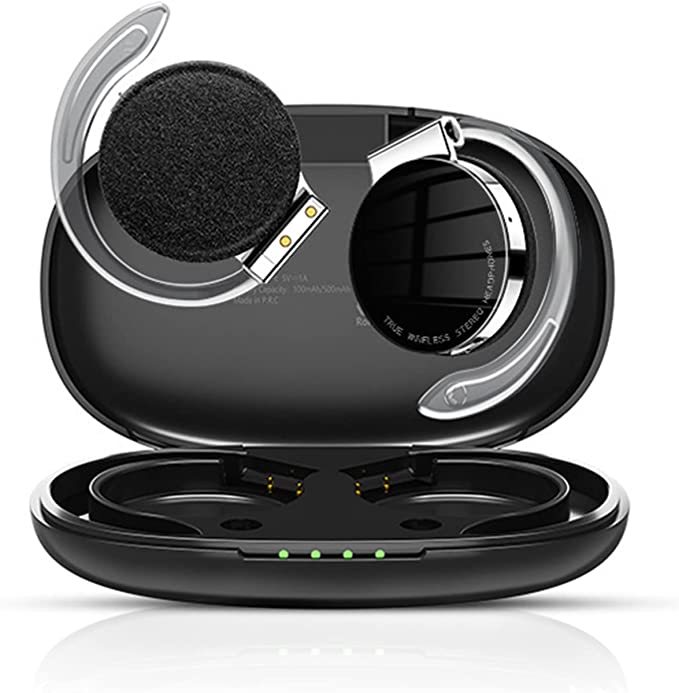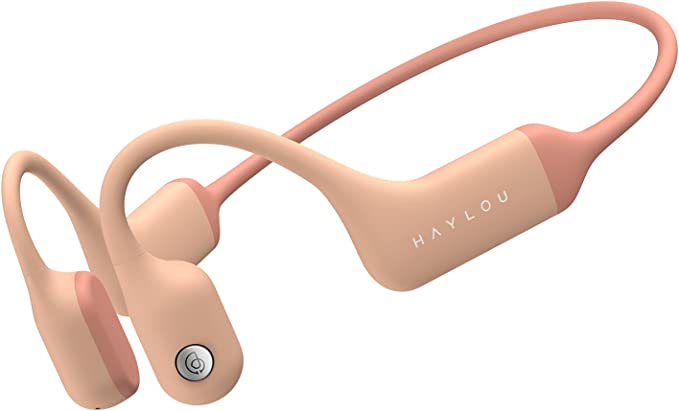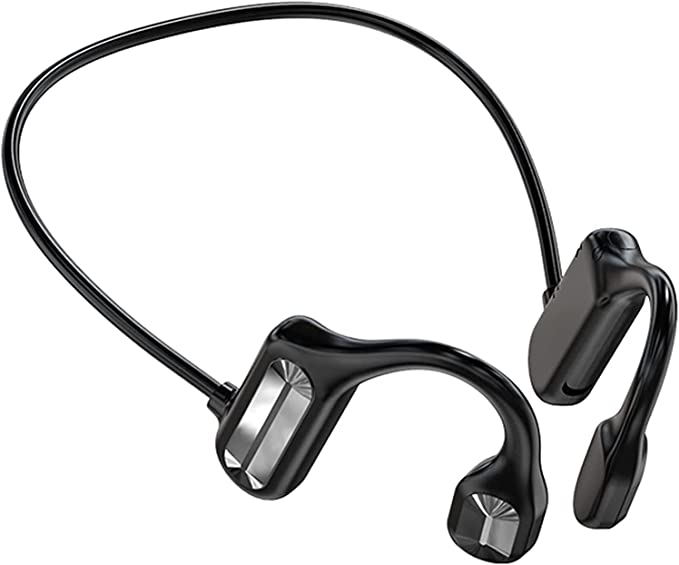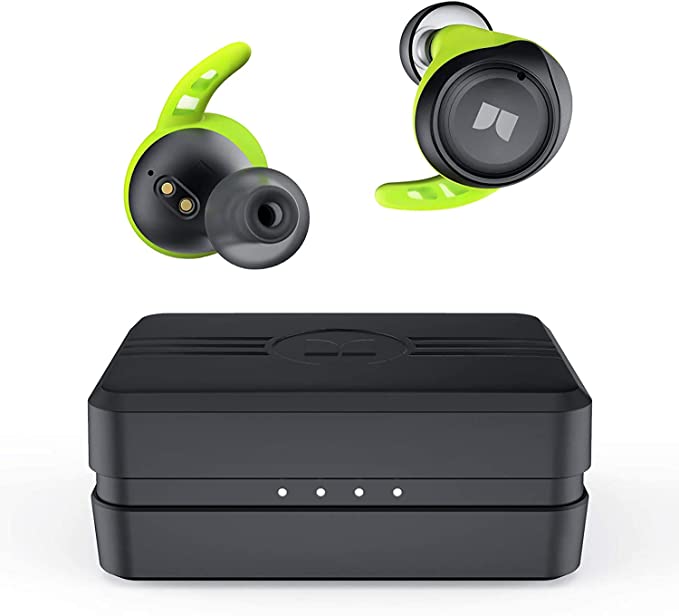The Biomechanics of Stability: Deconstructing the VOESUD Q53 for High-Impact Sports
Update on Nov. 23, 2025, 6:14 p.m.
In the domain of sports audio, there is a constant battle between Aerodynamics and Security. Minimalist earbuds rely on friction to stay in the ear canal, a method that often fails once sweat acts as a lubricant and kinetic energy increases. The VOESUD Q53 represents a divergent engineering philosophy: Mechanical Stabilization.
By adopting a robust ear-hook design and a massive charging chassis, this device prioritizes utility and endurance over invisibility. It is not designed to disappear; it is designed to persist. To understand its value, we must examine the physics of how it anchors to the body and how it powers marathon-level performance.

The Physics of the Hook: Cantilever Stability
The primary failure point of standard TWS (True Wireless Stereo) earbuds during exercise is the Pop-Out Effect. This occurs when the jaw moves (chewing, breathing heavily) or when vertical impact forces (running) break the friction seal in the ear canal.
The VOESUD Q53 counters this with an Adjustable Silicone Earhook. * Load Redistribution: Instead of relying solely on the ear canal to support the weight of the driver and battery, the hook transfers the load to the Helix Root (the upper curve of the ear connection). * The Cantilever Effect: The hook acts as a cantilever beam. When vertical G-forces pull the earbud down during a sprint, the hook engages with the top of the ear, converting the downward force into a clamping force that actually secures the device tighter. This mechanical lock is impervious to sweat lubrication, making it the superior architecture for high-impact activities.
Acoustic Displacement: The 13.4mm Driver
Sports environments are noisy. To compete with the thud of feet on pavement or the clatter of gym weights, an earbud needs to move significant air. The Q53 utilizes a 13.4mm Dynamic Driver, which is roughly 40-60% larger than the average 8mm driver found in compact buds.
- Air Volume: Sound pressure level (SPL) is a function of air displacement. A 13.4mm diaphragm has a much larger surface area, allowing it to generate deeper, more resonant bass frequencies without requiring excessive excursion that leads to distortion.
- “Punchy Bass” Physics: The marketing claim of “40% more bass” is rooted in this physical reality. The large driver creates a high-pressure zone within the ear canal, delivering the rhythmic impact essential for workout pacing, even if the seal isn’t hermetic.

Energy Density: The 120-Hour Paradigm
Perhaps the most striking specification is the 120 Hours of Playtime provided by the charging case. This is achieved through a fundamental trade-off: Volume vs. Capacity.
Most TWS cases hold 300-500mAh batteries. The Q53 case is significantly larger, likely housing a cell in the 2000mAh+ range (though not explicitly stated, the math of 120 hours suggests this). * Power Bank Architecture: This massive reserve changes the charging habit. Instead of a daily chore, charging becomes a monthly event. It transforms the case into a micro-grid for your audio, ensuring that “battery anxiety” is mathematically eliminated for even the longest ultra-marathons or backpacking trips. * Bluetooth 5.3 Efficiency: The inclusion of Bluetooth 5.3 further extends the 8-hour single-charge capability of the earbuds themselves. By optimizing the “handshake” intervals between the phone and the buds, the chipset reduces passive power drain, ensuring the 40mAh internal batteries are used primarily for audio reproduction.
Signal Clarity: CVC 8.0 vs. ANC
It is crucial to distinguish the Q53’s noise reduction technology. It features CVC 8.0 (Clear Voice Capture), not Active Noise Cancellation (ANC).
- The Distinction: ANC uses microphones to cancel world noise for you. CVC 8.0 uses algorithms to cancel background noise for the person you are calling.
- How it Works: Using beamforming techniques, the microphones identify the user’s voice frequency and suppress environmental frequencies (wind, traffic) from the outgoing signal. This ensures clear calls during a run, but it will not silence the gym music for the wearer. Understanding this distinction is key to managing user expectations.

Environmental Hardening: IP7 Waterproofing
The IP7 (technically IPX7) rating is a rigorous industrial standard. The ‘7’ signifies that the device can withstand immersion in water up to 1 meter deep for 30 minutes. * Nano-Coating: Achieving this usually involves a hydrophobic nano-coating on the internal PCB and mesh barriers on the acoustic ports. * The Sweat Factor: While IP7 allows for submersion, its primary value for athletes is resistance to Sweat Electrolytes. Sweat is corrosive and conductive. An IP7 rating ensures that salt deposits do not bridge circuits or corrode charging contacts, which is the leading cause of death for lesser sports headphones.

Conclusion: Utility Over Vanity
The VOESUD Q53 is unapologetically utilitarian. It sacrifices the pocketability of tiny cases for massive battery life. It trades the discreet look of stem-style buds for the unshakeable stability of ear hooks. For the user whose priority is uninterrupted performance during vigorous activity, these trade-offs are not just acceptable; they are necessary engineering decisions.
